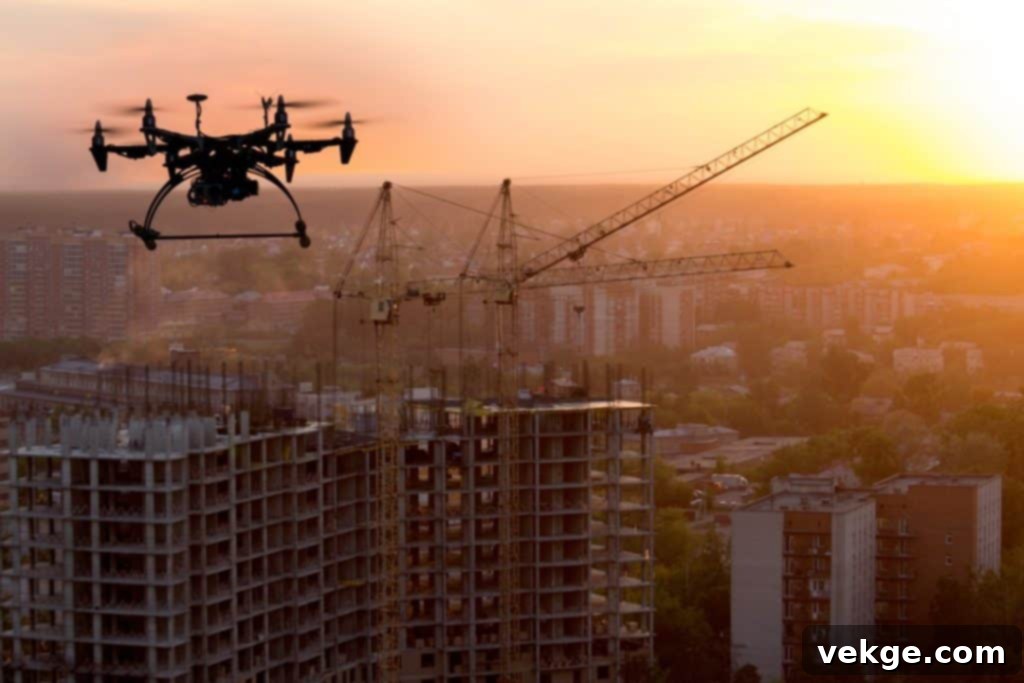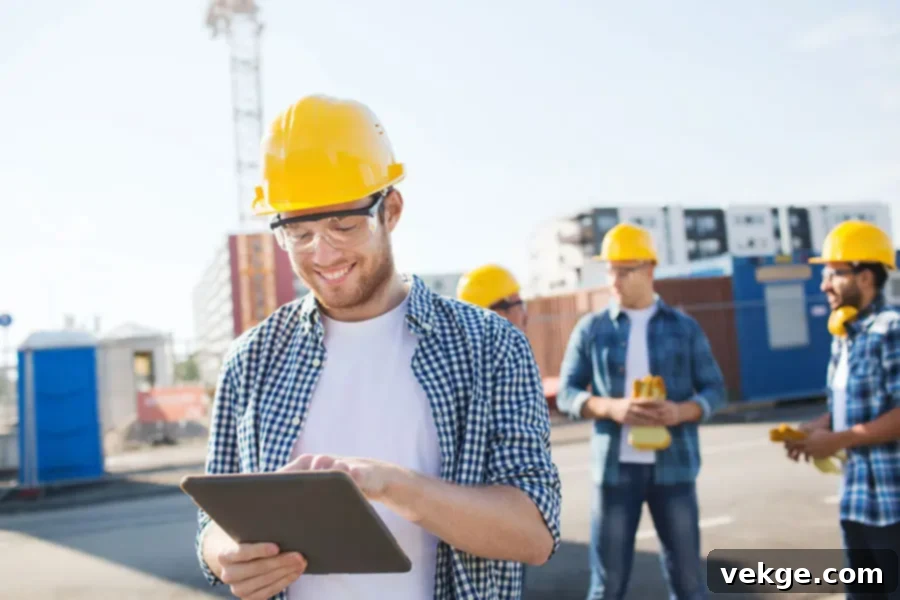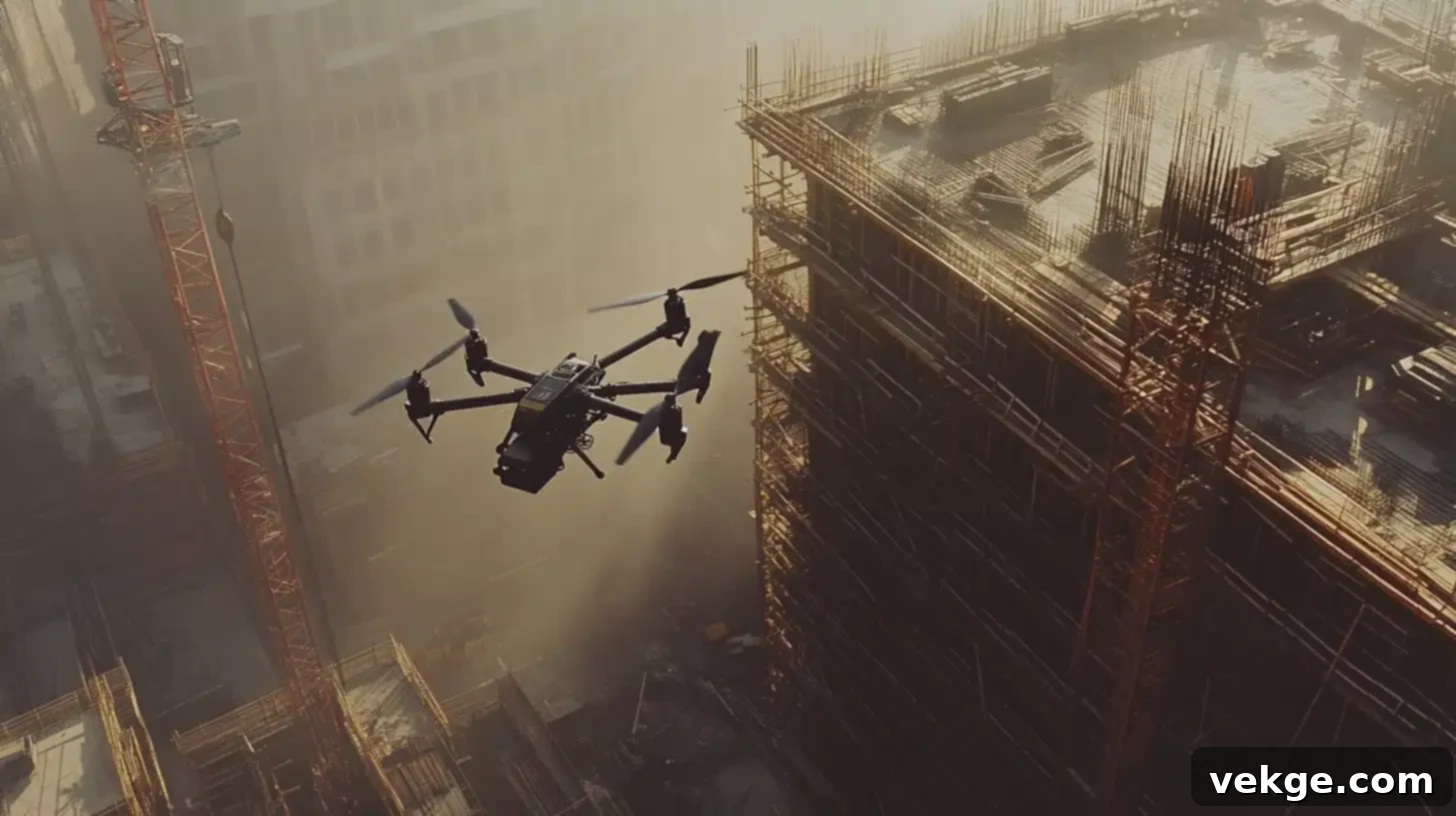The Future of Construction: Enhancing Safety and Efficiency with Drones and AI
The construction industry, a cornerstone of global infrastructure, has historically grappled with formidable challenges, including project delays, budget overruns, and significant safety risks. Traditional inspection methods often prove slow, labor-intensive, and inadequate for managing the complexities of modern construction sites. These inefficiencies hinder effective project management and compromise the safety of personnel, leading to a constant search for innovative solutions. Fortunately, the integration of advanced technologies like aerial drone services and artificial intelligence (AI) is ushering in a new era, fundamentally transforming construction inspections and site management.
These powerful tools are not just incremental improvements; they represent a paradigm shift. By leveraging drones for data acquisition and AI for intelligent analysis, construction projects can achieve unprecedented levels of efficiency, accuracy, and safety. This synergistic approach leads to smoother project execution, reduced operational costs, and ultimately, superior outcomes. For workers on the ground, who face the daily realities of managing intricate sites and inherent dangers, these technologies offer vital support. Drones meticulously handle high-altitude and hazardous area checks, significantly reducing physical strain and exposure to risks, while AI processes the vast amounts of collected data to proactively identify potential problems and ensure timely interventions.
The practical implications are profound: fewer accidents, minimized exposure to dangerous situations, and a more secure working environment. With comprehensive drone capabilities and AI-driven insights, construction teams are better equipped, receiving enhanced support and rigorous oversight. This integrated system cultivates a safer, more efficient, and more productive construction ecosystem for all stakeholders involved.
The Ascendance of Drones in Modern Construction

Drones, or Unmanned Aerial Vehicles (UAVs), have rapidly become indispensable assets in the construction industry, celebrated for their unparalleled ability to capture aerial views and collect critical data safely and efficiently. These sophisticated machines offer a perspective that is simply impossible to achieve through conventional, ground-based inspection methods. Their agility allows them to navigate challenging terrains, reach inaccessible areas, and cover vast expanses of land in a fraction of the time, without endangering human life.
Ongoing technological advancements have dramatically expanded drone capabilities, solidifying their status as essential tools for modern construction inspections. Key improvements include enhanced flight stability for precise data capture, high-resolution cameras capable of capturing intricate details, advanced LiDAR and thermal sensors, and extended battery life for prolonged operational durations. These features collectively boost their effectiveness in comprehensive job site monitoring, from initial site surveys to final project handover.
The seamless integration of drones with specialized software applications further streamlines the entire data collection and analysis workflow. Drones can effortlessly scan large construction sites, generating highly accurate topographical maps, precise site measurements, detailed 3D models, and real-time progress updates. This capability allows construction managers to monitor everything from earthwork volumes and material stockpiles to structural integrity and equipment placement, all without placing personnel in harm’s way. By leveraging drones, construction teams significantly improve their capacity to identify potential issues—such as deviations from design plans, material defects, or structural weaknesses—early in the project lifecycle, enabling timely interventions and preventing costly rectifications down the line. Furthermore, the increasing affordability and user-friendliness of drone technology have democratized its access, allowing even smaller construction companies to harness its transformative power and gain a competitive edge.
AI: The Intelligent Core Behind Construction Operations
Artificial intelligence (AI) is the true brain behind the operation, revolutionizing how data collected by drones is processed, interpreted, and utilized. These advanced algorithms work at incredible speeds, converting vast and often complex datasets into actionable insights and intelligent recommendations. By meticulously analyzing imagery, sensor data, and other collected information, AI systems can identify subtle patterns, anomalies, and potential issues that human inspectors might easily overlook or take extensive time to uncover. This unparalleled analytical capability significantly enhances the entire construction inspection process, enabling quicker, more informed decision-making and immediate responses to emerging problems.
AI software goes beyond mere data processing; it can categorize and prioritize issues based on their severity, location within the site, and potential impact on the project timeline or budget. When integrated with comprehensive drone data, AI creates a remarkably detailed, dynamic, and holistic overview of the entire construction environment. This allows construction teams to receive accurate, up-to-the-minute reports on a multitude of critical aspects, ranging from the structural integrity of newly erected components to strict compliance with safety regulations and building codes. Furthermore, AI can predict potential equipment failures, optimize resource allocation, and even generate automated progress reports, making project management more predictive and less reactive. The ability of AI to learn from historical data continually refines its accuracy, making it an increasingly invaluable asset for advanced site monitoring, quality control, and risk management in construction.
Transforming Safety Measures on Construction Sites
Safety has always been, and remains, the paramount concern in the inherently hazardous construction industry. The integration of drones combined with artificial intelligence introduces a groundbreaking era in site monitoring and risk mitigation. These sophisticated technologies dramatically enhance oversight capabilities, allowing for the rapid and precise detection of potential hazards, even in the most challenging environments.
Traditional inspection methods frequently necessitate personnel to physically access high-risk or difficult-to-reach areas, such as elevated structures, unstable ground, or confined spaces. This inevitably increases their exposure to dangerous conditions, elevating the likelihood of accidents, falls, or injuries. With drones, however, these perilous zones can be safely and thoroughly inspected from a distance, or from above, eliminating the need for human presence in unsafe situations. This significant reduction in human exposure directly translates to a lower likelihood of accidents and injuries, thereby fostering a much safer and more secure work environment for every individual involved in the project. Drones can conduct routine checks of scaffolding, assess the stability of excavations, inspect bridge structures, or monitor the integrity of roofs without putting workers at risk.
Beyond remote inspection, AI further amplifies safety measures by analyzing aerial data to predict risks and spot potential issues proactively. Regular drone surveys provide comprehensive visual and sensor-based records, which AI algorithms can analyze to identify patterns indicative of future problems, such as developing structural weaknesses, improperly stored materials, or malfunctioning equipment. Catching these hazards early allows construction teams to address them before they escalate into serious incidents, enabling a shift from reactive problem-solving to proactive risk management. This predictive capability of AI not only saves lives but also prevents costly damage and project delays, cementing the drone-AI synergy as a cornerstone of modern construction safety protocols.
Unlocking Real-Time Insights and Precision Reporting

In the fast-paced world of construction, instant access to accurate, actionable data can profoundly shape project outcomes. Drones equipped with high-resolution cameras, thermal sensors, and LiDAR technology capture a wealth of visual and spatial data that provides an incredibly clear and detailed view of the job site. When these rich aerial images and datasets are combined with advanced AI analysis, they create a highly effective and dynamic system for real-time reporting and continuous project monitoring.
By merging these cutting-edge technologies, construction teams gain the unprecedented ability to identify issues as they arise, often within minutes of a drone flight. This immediate visibility means that quick decision-making becomes not just possible but standard practice, allowing teams to adjust project plans, reallocate resources, or deploy corrective measures on the fly. For instance, if a drone survey reveals unexpected material stockpiles blocking access routes or deviations from the planned structural layout, managers can be alerted instantly, preventing potential bottlenecks or rework.
AI algorithms meticulously interpret the vast amounts of data streamed from drone footage, producing detailed, intelligent reports with remarkable speed. This capability allows teams to evaluate project progress, track resource allocation, and monitor quality metrics with unparalleled efficiency and accuracy. Managers and stakeholders can receive updates on various critical aspects of the construction environment—such as progress against schedule, earned value analysis, material usage, and adherence to quality standards—almost instantaneously. These AI-driven reports don’t just present data; they highlight areas that specifically require attention, supporting proactive management strategies rather than traditional reactive responses. This continuous feedback loop ensures that projects stay on track, within budget, and adhere to the highest quality standards, minimizing surprises and maximizing overall project success.
Driving Cost Savings and Boosting Productivity
While the initial investment in drones and artificial intelligence technology might appear challenging for many construction companies, facing upfront expenses and a learning curve, the long-term financial benefits and productivity gains quickly become apparent and compelling. These technologies are not merely expenses but strategic investments that yield significant returns over the project lifecycle and beyond.
Drones can gather comprehensive data with unparalleled efficiency, drastically reducing the time and manual effort traditionally required for site inspections, surveys, and progress monitoring. This efficiency directly contributes to faster project completion times, fewer unforeseen delays, and a significantly reduced need for costly rework, all of which contribute substantially to overall cost-effectiveness. For instance, a drone can complete a site survey in hours that would take a human crew days, leading to substantial labor cost savings.
Resource utilization fundamentally improves with the implementation of these digital tools. Drones eliminate the need for extensive manual labor during site assessments and inspections, freeing up skilled personnel for more critical tasks. Fewer workers are required to access hazardous zones, minimizing labor costs while simultaneously enhancing worker safety. AI further amplifies this efficiency by swiftly analyzing the collected data, allowing teams to make informed, data-driven decisions rapidly. By identifying potential issues such as design clashes, material discrepancies, or structural anomalies early in the construction process, AI helps avoid costly repairs, project setbacks, and potential legal disputes. Moreover, the predictive capabilities of AI can optimize material ordering, equipment maintenance schedules, and labor deployment, ensuring that resources are always utilized in the most efficient and economical manner. The integration of drones and artificial intelligence marks a pivotal turning point in construction practices, heralding an era of enhanced efficiency through streamlined workflows, proactive safety measures, and optimized resource management. Teams equipped with these cutting-edge technologies experience smoother project executions, significantly reducing delays and minimizing risks across the entire construction site. This profound shift opens up unprecedented opportunities for improved performance, higher quality standards, and sustained innovation throughout the industry, fostering a more competitive and resilient construction sector.
Challenges and the Evolving Future of Construction Tech
Despite the undeniable benefits, the adoption of drones and AI in construction isn’t without its challenges. Initial investment costs, coupled with the need for specialized training for operators and data analysts, can be barriers for some companies. Regulatory hurdles, such as navigating airspace restrictions, privacy concerns, and obtaining necessary permits, also require careful attention. Furthermore, ensuring data security and managing the vast amounts of information generated by these technologies are crucial considerations. However, these challenges are being actively addressed through technological advancements, clearer regulations, and robust training programs.
The future of construction technology with drones and AI is incredibly promising. We can anticipate even greater levels of automation, with fully autonomous drone fleets conducting routine inspections and AI systems capable of predictive maintenance for machinery and infrastructure. Integration with Building Information Modeling (BIM) will become even more seamless, allowing for real-time validation of construction against digital twins. The use of swarm robotics for complex tasks, advanced sensor fusion for hyper-accurate site mapping, and AI-driven generative design are on the horizon, promising to further revolutionize how we plan, build, and manage our urban environments and infrastructure. These innovations will not only streamline construction processes but also create entirely new job roles and foster a more sustainable, resilient, and intelligent built world.
Conclusion: Paving the Way for a Smarter Construction Era
The synergy between drones and artificial intelligence is not just an incremental improvement but a fundamental transformation for the construction industry. By providing enhanced efficiency through streamlined workflows, comprehensive data insights, and proactive safety measures, these technologies are setting new benchmarks for project delivery. Construction teams equipped with these advanced tools are experiencing smoother project executions, significantly reducing delays, mitigating risks, and achieving superior quality outcomes on every site. This profound shift is unlocking new opportunities for improved performance and elevating standards across the entire industry.
The unprecedented access to real-time data empowers informed decision-making, preparing construction teams to adeptly navigate present complexities and future challenges. As these innovative technologies continue their rapid advancement and become more integrated into daily operations, the potential for revolutionizing construction tasks and outcomes is immense. This powerful combination promises to deliver a more effective, safer, and ultimately more sustainable work environment for everyone involved, paving the way for a truly smarter and more resilient built world.
